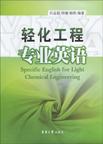轻化工程专业英语
出版时间:2009-11 出版社:东华大学出版社 作者:田孟超,郑瑾,杨凯 编著 页数:215
前言
轻化工程(染整方向)专业英语是我国高等院校轻化工程(染整方向)专业本科生在学习专业课程的同时开设的一门专业必修课,旨在通过该课程的学习,使学生熟悉轻化工程专业领域常见的英文词汇,掌握该专业英语的特点及其翻译技巧,了解科技论文的阅读及写作方法,以便能够准确迅速地获取染整及相关行业的发展信息,提高学习、工作和对外交往的能力。 系统全面、准确实用是本教材的特色。本教材的参编人员为在高校从事专业英语教学的老师,有较高的学历背景和丰富的教学经验,课文取材广泛,内容新颖,词汇量适中,知识覆盖全面。 笔者建议轻化工程(染整方向)专业英语课程安排在大三至大四上学期,让本科生学习专业知识的同时,掌握一定的英文专业知识,为方便阅读、检索英文资料和以后的深造与将来参加工作打下基础。 本书编写的出发点是以轻化工程(染整方向)专业的学生学习为主,兼顾相关类专业学生的学习。 我们以专业内容介绍为主线索,同时为学生日后所要开设的课程、知识体系勾勒出一个轮廓。我们把轻化工程专业的专业基础课和专业课的内容精选为9个单元,每一单元对应一门课程,同时也是对应一个模块的知识。第1、2章分别介绍纺织材料与纺织技术;第3章为织物的前处理;第4~7章分别介绍颜色理论、染料化学、染色技术、印花技术;第8章介绍后整理;第9章介绍服装设计与工程的基本内容。 内容的选编与取舍,侧重对基本框架的搭建和基础概念的陈述,了解学科中最基础同时也是最重要的学科思想。 第1章为纤维部分,介绍主要的纺织材料即天然纤维与化学纤维,天然纤维介绍棉、麻、毛、丝的基本结构特点与性能,化学纤维介绍再生纤维素纤维与合成纤维,介绍了基本的纺丝方法如熔融纺丝、干法纺丝、湿法纺丝等。 第2章为纺织技术部分,介绍了纺纱、机织、针织、非织造布的概念与基本原理。 第3章为前处理部分,介绍了织物的前处理如退浆、煮练、漂白、烧毛、丝光等。 第4章为颜色光学部分,介绍了物质显现颜色的原理以及视觉的构成,三原色以及二次色、三次色等配色理论。 第5章为染料化学部分,介绍了基本的染料种类及其性能特点,染料颜色与结构之间的关系。 第6章介绍染色工艺与染色设备,包括上染的过程与固色,包括纱线染色、纤维染色、匹布和成衣的染色,以及相应的染色设备,如染缸、轧染机、卷染机、绳状染色机、溢流染色机、气流染色机等。 第7章介绍印花工艺与印花设备,包括基本的印花、干燥、蒸化、洗涤,印花包括木版印花发展到现在的辊筒印花,钢网印花发展到现在的丝网印花(平网、圆网),数码印花以及涂料印花技术。
内容概要
本书将纤维、纺织、印染、服装的专业内容进行了整合,从一个较广阔的范围全面向学生提供了专业背景及其概论知识。本书内容广泛、学科脉络清晰,从纤维到纺织,从印染到服装,内容共分为9章。第1、2章分别介绍纺织材料与纺织技术;第3章 为织物的前处理;第4~7章分别介绍颜色理论、染料化学、染色技术、印花技术;第8章 介绍后整理;第9章 介绍服装工程的基本内容。 本书可作为化纤、纺织、印染、服装材料、纺织检验等本(专)科的专业英语教材或专业导论教材,也可供相关专业师生和工程技术人员参考。
书籍目录
Unit 1 Fibers 1.1 Overview 1.2 Natural Fibers 1.3 Manufacturing: Formation Technology of Chemical Fibers 1.4 Chemical Fibers References Further ReadingsUnit 2 Textile 2.1 Textile 2.2 Yarn & Spinnin 2.3 Weaving 2.4 Knitting 2.5 Nonwovens References Further ReadingsUnit 3 Fabric Preparation 3.1 Preparation Processes 3.2 Desizing 3.3 Scouring 3.4 Bleaching 3.5 Mercerizing 3.6 Singeing 3.7 Carbonizing of Wool 3.8 Heat Setting References Further ReadingsUnit 4 Color 4.1 Physics of Color 4.2 Color Perception 4.3 Primary Color 4.4 Secondary Color 4.5 Tertiary Color 4.6 Useful Information References Further ReadingsUnit 5 Dye Chemistry 5.1 Dyes & Dyeing 5.2 Acid Dye 5.3 Direct Dye 5.4 Disperse Dye 5.5 Reactive Dye 5.6 Vat Dye 5.7 Sulfur Dye 5.8 Cationic Dyes 5.9 Optical Brightener References Further ReadingsUnit 6 Dyeing machinery 6.1 Stock Dyeing 6.2 Yarn Dyeing 6.3 Piece Dyeing 6.4 Garment Dyeing References Further ReadingsUnit 7 Printing 7.1 Overview 7.2 Roller Printing 7.3 Flat-screen Printing 7.4 Rotary-screen Printing 7.5 Pigment Printing 7.6 Transfer Printing 7.7 Digital Printing References Further ReadingsUnit 8 Fabric Finishing 8.1 Mechanical Finishing 8.2 Durable Press Finishes 8.3 Hand Modification 8.4 Repellent Finishes 8.5 Soil-Release Finishes 8.6 Flame Retardant Finishes 8.7 Antipill Fabric Finishing 8.8 Antistatic Finishes References Further ReadingsUnit 9 Fashion Engineering 9.1 Fashion Design 9.2 Pattern 9.3 Fashion Manufacture 9.4 Functions of Clothing 9.5 Clothing Maintenance Reference Further Readings
章节摘录
The mature plant is cut with mowing equipment, similar to hayharvesting, and raked into windrows. When dried sufficiently, acombine then harvests the seeds similar to wheat or oatharvesting. The amount of weeds in the straw affects itsmarketability, and this coupled with market prices determinedwhether the farmer chose to harvest the flax straw. If the flaxwas not harvested, it was typically burnt, since the straw stalk isquite tough and decomposes slowly (i. e. , not in a single season),and still being somewhat in a windrow from the harvestingprocess, the straw would often clog up tillage and plantingequipment. It was common, in the flax growing regions ofwestern Minnesota, to see the harvested flax straw (square) balestacks start appearing every July, the size of some stacks beingestimated at 10-15 yards wides by50 or more yards long, and astall as a two-story house.
图书封面
评论、评分、阅读与下载
用户评论 (总计1条)
- 这方面的书籍很少, 感谢当当网 !
